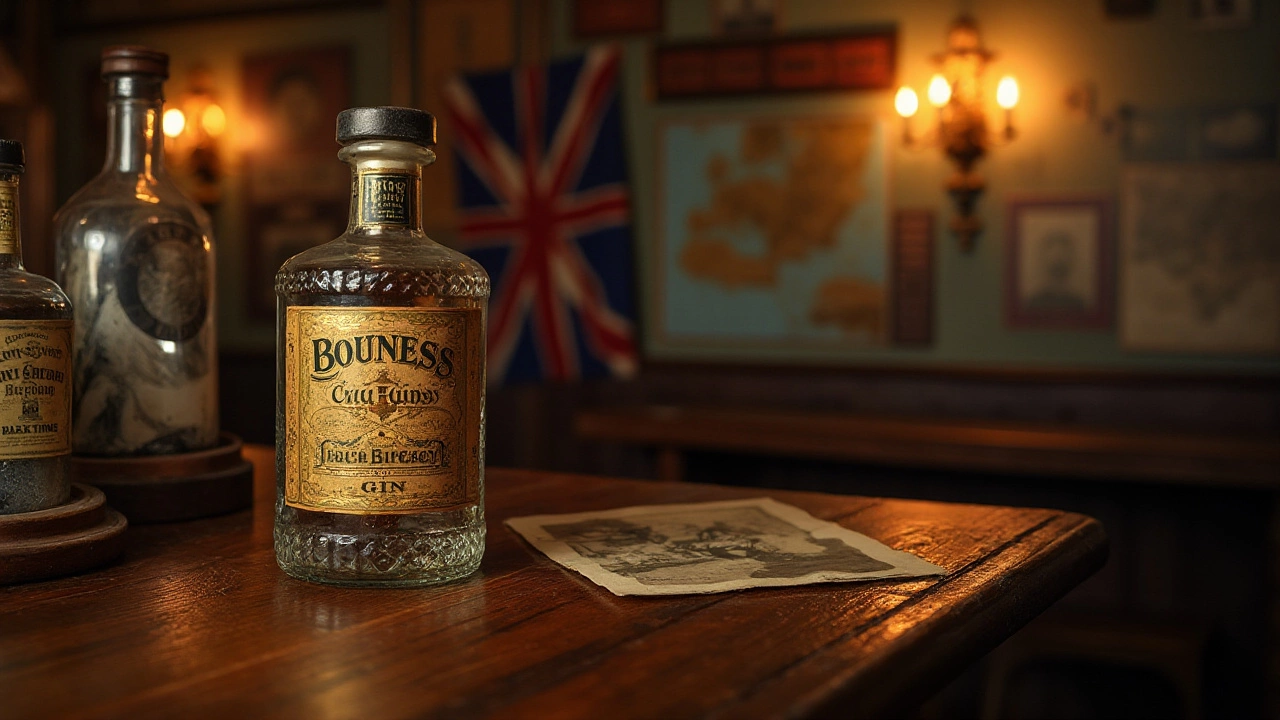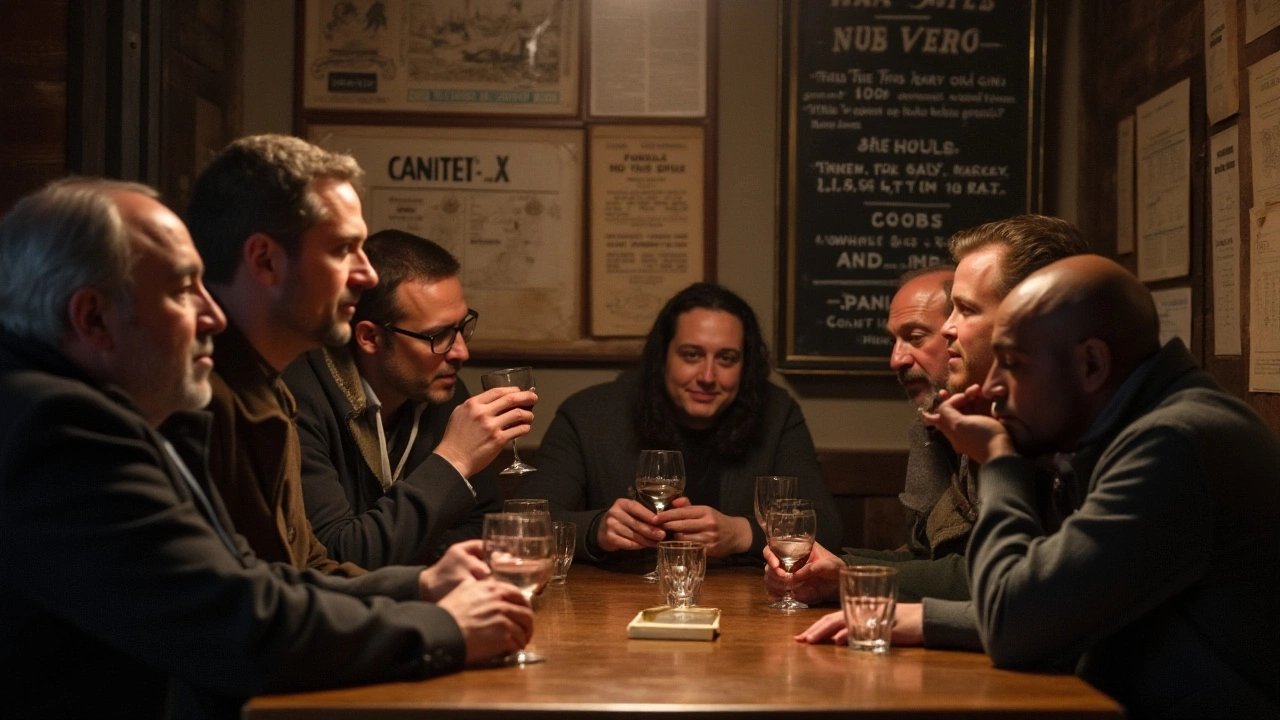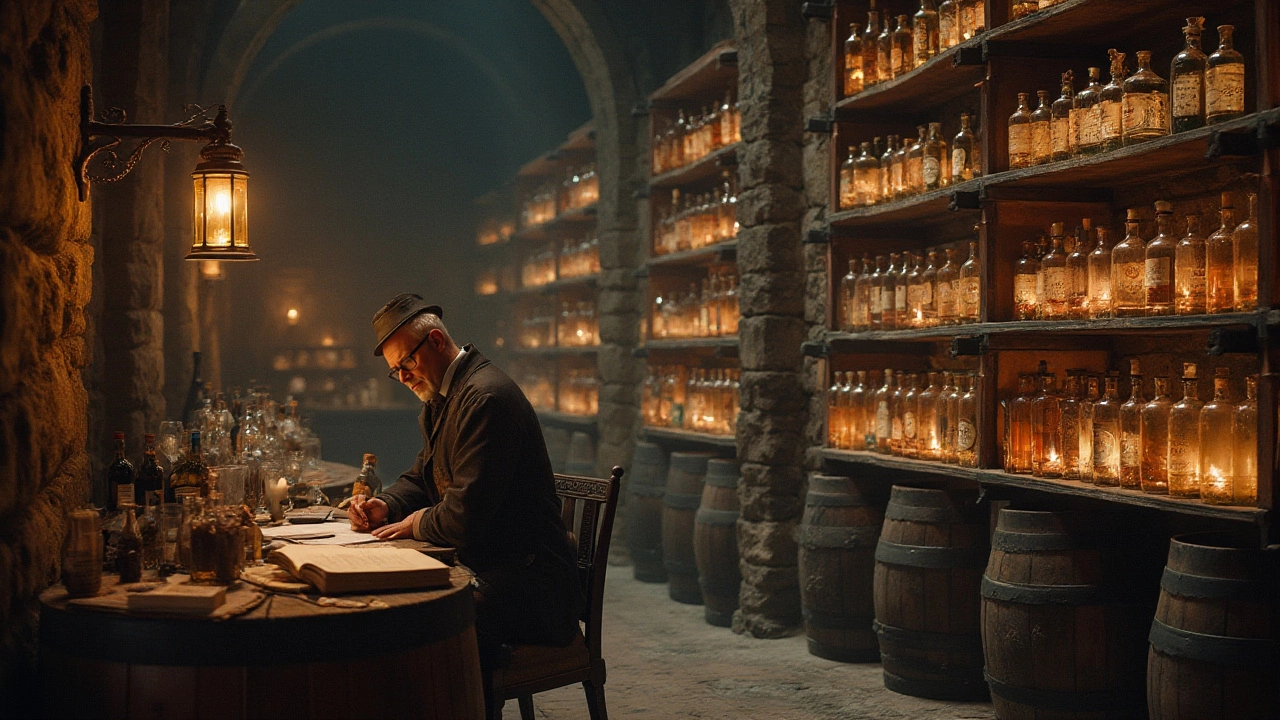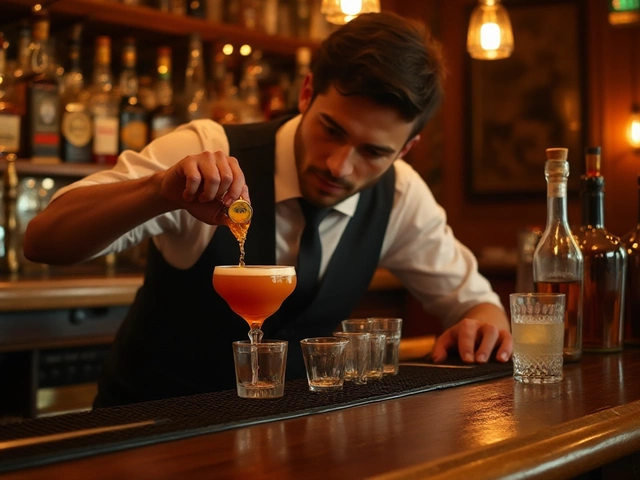Imagine stumbling across a bottle of gin that's been waiting a hundred years for a sip. Is it a treasure trove for the taste buds or a gamble? The world of vintage spirits opens a door to the past, revealing a liquid journey that intertwines with history. Each bottle tells a story of crafting techniques and the conditions that have shaped its essence over a century.
But before you pour yourself a glass, there are intriguing factors to consider. Does this century-old gin still hold its original allure, or has time left its mark in unexpected ways? From storage conditions to the aging process, these elements play a crucial role in determining whether this aged gin is an appealing adventure or best left as a historical piece.
Join us as we explore the characteristics of 100-year-old gin, navigating safety tips and tasting notes offered by distillery experts. Whether you seek to unlock secret flavors or delve into the lore, this journey promises to enrich your appreciation for aged spirits and the enigmatic nature of time itself on a beloved drink.
- History and Crafting of Vintage Gin
- Preservation and Storage Techniques
- Tasting Notes and Safety Considerations
- Distillery Tours and Expert Opinions
History and Crafting of Vintage Gin
Embarking on a journey through the history of gin, particularly the elusive 100-year-old gin, offers a glimpse into a world of traditional methods and mystique. Gin, as we know it today, traces its roots back to the 17th century in Holland. It was initially introduced as 'jenever', a medicinal tonic crafted from juniper berries. Fast forward to the 19th and early 20th centuries, and gin production had evolved immensely. During this era, distillers began experimenting with various botanicals, giving birth to diverse flavors that we might find in a century-old bottle today.
Crafting gin a hundred years ago involved much more labor-intensive methods than modern practices. Tradition held that copper pot stills were the vessel of choice, ensuring a distinct purity in flavor. The process was both art and science, requiring vast knowledge of not just the machinery but of the quality of ingredients that went into every brew. In those days, the selection of botanicals went beyond just juniper. Other ingredients like coriander, angelica root, and citrus peels were added in carefully guarded measures, often passed down through generations.
Back then, quality control and flavor consistency were more challenging to maintain. Often, what you might taste in a vintage spirit had a lot to do with the creativity and intuition of the distiller. This is perhaps why these antique bottles of gin hold such fascination today, offering a flavor profile that cannot be replicated. According to Derek Brown, a known cocktail historian, there’s a romantic allure to these spirits, where each sip becomes 'a point of connection to the past.'
This understanding leads to the meticulous saving and storing of these spirits over time, which in itself became an art form. When visiting old distilleries, you'll sometimes hear stories of how certain blends were particularly cherished and thus preserved. These narratives are as much a part of the gin’s legacy as the drink itself. Such aging offers complexity and depth, much like a fine wine, adding mystery to the potent spirit you may hold in your hand.

Preservation and Storage Techniques
Preserving a bottle of gin for a century is no small feat, and the methods employed can be as fascinating as the gin itself. When we talk about preserving 100-year-old gin, the delicate balance of maintaining its integrity while allowing its character to mature is paramount. Climate is one of the biggest players in this game. A stable, cool environment significantly slows down any chemical reactions within the bottle, thus preserving its flavor and aroma. Humidity levels also need to be monitored, as excessive moisture can encourage spoilage, especially if the bottle cork is not perfectly sealed.
Now, let's move into the nitty-gritty of gin storage. The bottle should always be kept upright to prevent the gin from coming into constant contact with the cork, which can degrade over time and adversely affect the spirit's quality. Darkness is an excellent ally in this journey as well. Light, particularly sunlight, can cause unnecessary chemical changes, leading to an unfavorable alteration in both taste and color. Hence, storing your prized bottle in a dark cupboard or a wine cellar is advisable.
One of the insightful practices seen in historical distilleries involves the explicit labelling and periodic checking of these vintage bottles. This approach helps in catching any potential spoilage before it's too late. Some modern-day distilleries draw inspiration from these practices. According to Master Distiller Thomas Green,
“Proper labeling and routine inspection have been the key to successfully storing and eventually enjoying spirits like gin over decades.”
Experts suggest avoiding unnecessary agitation of the bottle. As pleasant as the idea might seem, aging spirits are best left undisturbed for they develop subtle notes and complexities over time. This patience can pay off significantly, as highlighted by some very fine vintage spirits that are held in high esteem among collectors and connoisseurs alike. The air trapped in the bottle, known as ullage, plays a significant role in the aging process. It must be minimal to prevent oxidation, which may lead to the gin tasting flat or unpleasant.
Understanding these principles not only helps preserve a rare and valuable spirit but also provides a window into the meticulous care and tradition that backs the art of distillation. Preserving a bottle of 100-year-old gin isn't just about protecting a liquid; it's about safeguarding a sip of history, a testament to the skillful alchemy of nature and human creativity.

Tasting Notes and Safety Considerations
Diving into the world of 100-year-old gin is akin to unlocking a time capsule filled with the whispers of a century. These vintage spirits carry with them the aroma, flavors, and mysteries that were sealed away long before our time. As you prepare for a tasting, it’s crucial to understand that the profile of such an aged gin might deviate significantly from contemporary expectations. With hints of botanicals that have mellowed and a nose that can range from ethereal to musky, each bottle offers a singular experience. You'll often discover unexpected notes like woodiness, mustiness, or even a touch of sweetness, which have evolved due to years of slow oxidation and interaction with the bottle's material.
But before lifting the cork, safety is paramount. It's essential to verify that the century-old gin has been stored under appropriate conditions. The bottle should show no signs of severe evaporation or contamination. One must examine the seal to ensure no harmful bacteria have invaded the contents. Harmful microorganisms are less likely to thrive in high-alcohol environments like gin, yet safety cannot be overstated. Testing for clarity can help; if the liquid appears cloudy or has sediments, it might indicate a compromised bottle. It’s advisable to start with a small quantity to test both the flavor and the effect before indulging more liberally.
The Opinions of Experts
Seeking out advice from distillery experts or seasoned tasters can provide invaluable insight. Often, they recommend reaching out to specialized appraisers or distillers for guidance on whether your 100-year-old gin is safe to drink. This advisory step acts not just as a precaution but as an enriching phase of the tasting journey, allowing you to learn as much about your gin as possible. As John Pepper, an eminent gin historian, remarks:
“To sip an aged gin is to taste a bygone era; it’s a sensory bridge to people and places long gone.”These words capture the essence of what makes tasting an old gin both significant and mysterious.
| Year | Tasting Note | Safety Alert |
|---|---|---|
| 1924 | Rich, herby overtones; slight vanilla notes | Check for cloudiness |
| 1930 | Floral bouquet with a hint of citrus | Ensure seal integrity |
Tasting such aged delights isn’t just about flavor but the story behind each drop. The process might become a delightful history lesson, offering more than just the sense of taste. For enthusiasts, the experience transcends simply drinking; it becomes a ritual of respect and discovery, with each sip unfolding the complexities of time spent in a quiet, dark corner. As you embark on this unusual tasting journey, remember that patience and respect for the process can add layers of enjoyment to such a rare treat.

Distillery Tours and Expert Opinions
Venturing into the fascinating world of gin distilleries, especially those with a history stretching back a hundred years or more, feels like stepping into a time capsule. These tours present a live tapestry of tradition and the art of gin-making, offering tantalizing glimpses into how 100-year-old gin was crafted. Many distilleries are set in charming, picturesque locations, brimming with stories waiting to be uncovered. Walking through the halls of history, you see the original copper stills and beautifully preserved equipment, hinting at the meticulous care and passion for crafting spirits that stand the test of time.
The beauty of these places lies not only in their historical interiors but also in the experts who bring these stories to life. Unveiling the mysteries of vintage gin is as much about who tells the tale as it is about the gin itself. Engaging with a seasoned distiller is a treasure chest of wisdom. Gin masters often hold the key to understanding the elusive charm of a century-old bottle. From preservation techniques to decoding the impacts of aging on flavor, their insights are invaluable. During these tours, guests might have the unique chance to savor a sample of gin aged in wooden casks since the early 1920s, offering a crackle of taste that whispers the secrets of the past across the palate.
While some historic distilleries have embraced modernity without losing their soul, others have steadfastly clung to tradition. Their tales often help illuminate whether drinking a 100-year-old gin is an experience worth the risk. A few of these experts might suggest caution, highlighting that century-old spirits can be quite unpredictable. "The magic of 100-year-old gin isn't just in the aroma or taste," explains seasoned distiller Jonathan Mills, "It's in the journey of time that's captured within every drop."
For those fortunate enough to join these immersive distillery journeys, there is often an added experience where guests can participate in tastings guided by a master distiller. These tastings might include not just the vintage gins, but also contemporary blends that reveal the evolution of gin-making styles over the decades. Immersion in such a narrative-rich environment fosters a deeper appreciation for the intricate dance of flavors aged gin can offer. Attending these tours requires an inquisitive spirit and an eager palate, for each sip is like a footprint on the sands of time, a small taste of history that few are lucky enough to savor.
The tours are not merely educational; they can be the very adventure an enthusiast dreams of, filled with engaging conversations and perhaps even debates about the best ways to preserve or sip a historic spirit. Enthusiasts might even find themselves unexpectedly connected, through taste or storytelling, to the hands that crafted the gin long ago. In some distilleries, the sheer extent of history involved may also be supported by informal exhibitions or stories shared orally by the members who may have spent their whole lives in service of this rich tradition.


